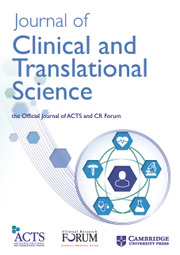No CrossRef data available.
Article contents
406 Aging and sarcopenia of the diaphragm muscle
Published online by Cambridge University Press: 11 April 2025
Abstract
Objectives/Goals: Understand the impact of sarcopenia on the main respiratory muscle, the diaphragm (DIAm). We hypothesize that in the DIAm of older (i.e., 24 months) compared to younger (i.e., 6 months) rats, maximum specific force (P0) is reduced, maximum shortening velocity (Vmax) is slower, maximum power output is reduced, and endurance is improved. Methods/Study Population: Mid-costal DIAm strips were excised from 6-month (n = 8; 4 female and 4 male) and 24-month (n = 8; 4 female and 4 male) rats. The DIAm was stimulated using platinum plate electrodes, and mechanical and endurance properties were measured (at 26oC). Results/Anticipated Results: In the DIAm, maximum tetanic formce (P0) decreased by ~35%, maximum velocity of shortening (Vmax) slowed by ~20%, and peak power output was reduced by ~35% in 24-month compared to 6-month rats. During repetitive isovelocity (30% Vmax; approximating peak power output) contractions, endurance (the period during which power output was sustained) of the DIAm was unaffected by aging. Corresponding with previous findings, Discussion/Significance of Impact: The changes in DIAm mechanical performance corresponded to an age-related atrophy of type IIx/IIb muscle fibers. We conclude that force generation and endurance of the DIAm required for breathing motor function is preserved in old age, while DIAm sarcopenia does impair more forceful expulsive airway clearance and voiding behaviors.
- Type
- Other
- Information
- Creative Commons
- This is an Open Access article, distributed under the terms of the Creative Commons Attribution-NonCommercial-NoDerivatives licence (https://creativecommons.org/licenses/by-nc-nd/4.0/), which permits non-commercial re-use, distribution, and reproduction in any medium, provided the original work is unaltered and is properly cited. The written permission of Cambridge University Press must be obtained for commercial re-use or in order to create a derivative work.
- Copyright
- © The Author(s), 2025. The Association for Clinical and Translational Science


